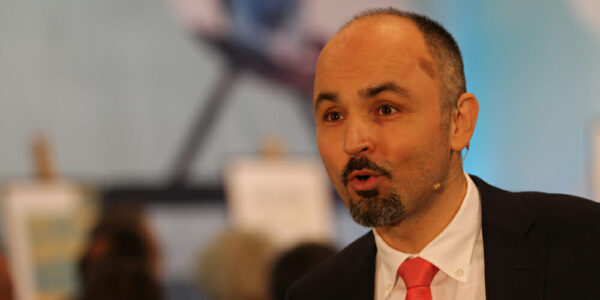Following the 70th anniversary celebrations of the Inter-European Division media center Stimme der Hoffnung (SdH) in Alsbach-Hähnlein, Germany, Adventist World associate editor Gerald Klingbeil spoke with SdH CEO Klaus Popa about the future of the ministry, Adventist media in a media-saturated world, and the dreams he has for SdH.
We just looked back at 70 years of SdH history. What do you see in the future of the ministry?
The purpose of SdH has been from the beginning to share faith in an understandable way in today’s society. What changed throughout the years was the means of communication. With respect to the future, the message will remain the same, while the way society communicates will surely change. We have to make sure that we will be where people are.
You emphasized Hope Centers today. Why is it so important to connect media and technology with real people and local congregations?
Human beings have been created as relational beings. Relations are at the core of life. Therefore, we do not only support people to connect with God, to make a decision for Christ, and to get baptized. Central to what we do is to support people in finding a spiritual home in a local congregation. That was key from the beginning, when it all started in 1948 with the radio ministry and the Bible correspondence school. In our view, the most important aspect of media ministry is the local faith experience. Faith is always personal and relational.
How do you deal as a media ministry with the increasing media saturation of our societies all around the world? How can the church’s media ministries, including SdH, distinguish themselves from the multiple voices crowding our news feeds and social media channels?
We are not about winning the game of grabbing the attention of our audiences. Church media will hardly be able to compete with the general media industry in terms of entertainment factor, special effects, etc. However, we can offer something that others usually don’t — hope, healing, and love — introducing people to our merciful and loving father. If we do this in an authentic, vulnerable, and loving way, then there will be impact.
Seeing that viewing habits are so distinct from generation to generation, do you see SdH’s ministry connect across generations? Do we need to be more intentional about reaching specific generations?
Connection across generations depends on the relevance of content. We experience that different age and socio-economic and ethnic groups need different types of content. Yes, churches need to be more intentional in communicating to specific parts of society. Of course, this requires more resources. However, if collaboration and synergy is increased in the church, then we can succeed together.
Do you see SdH more as inreach or as outreach?
Statistics show that about 75 percent of German-speaking Hope Channel TV viewers do not belong to the Seventh-day Adventist Church. With respect to the Hope Bible Study Institute, the ratio is even higher. About 90 percent of the participants are not connected with our faith community.
What are your dreams for SdH for the next 10 years?
For the coming years, I wish that as a team we continue to focus on the essence: sharing the love of God with people so that they will find healing and hope. Everything else will come in its own time.


